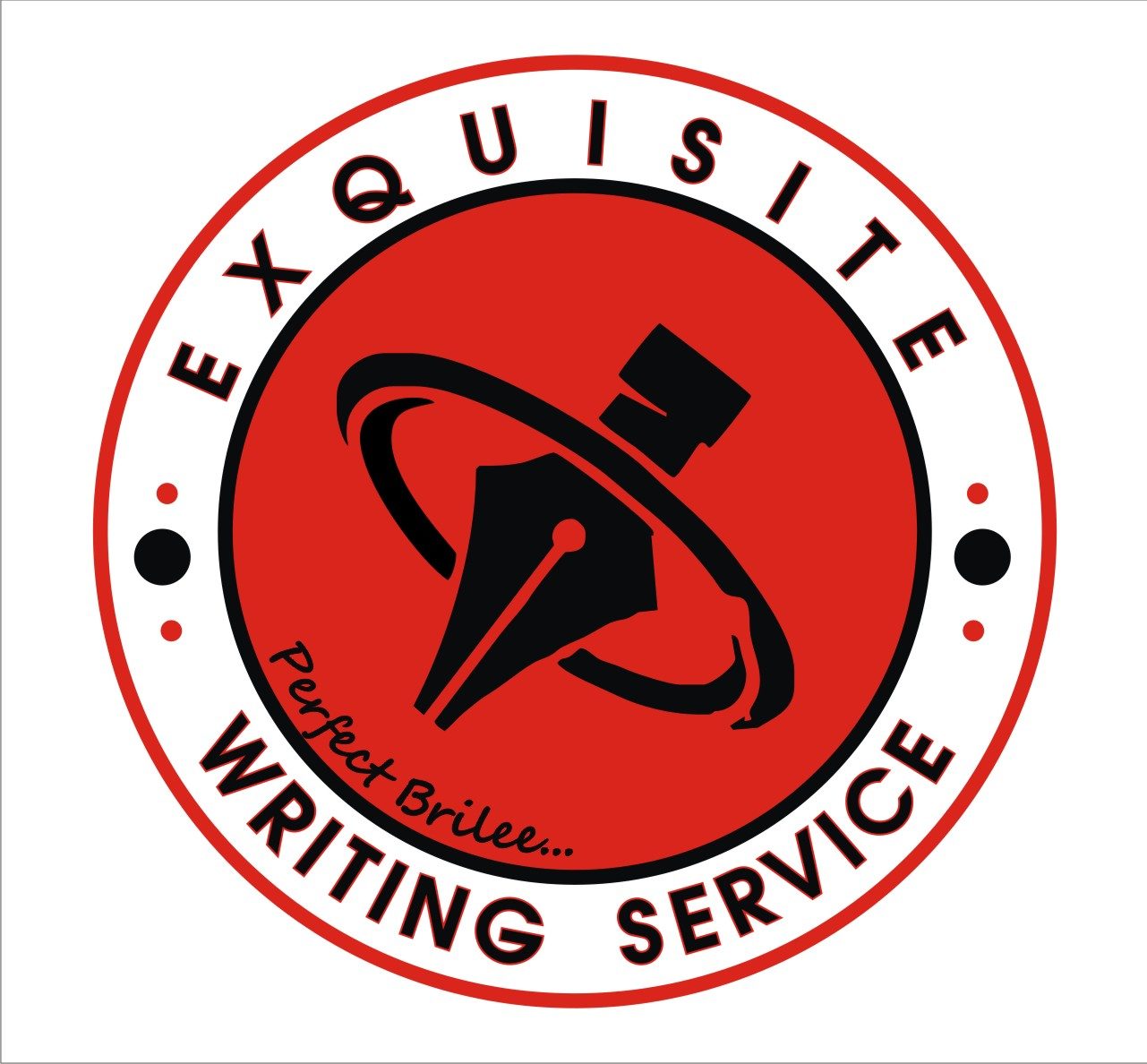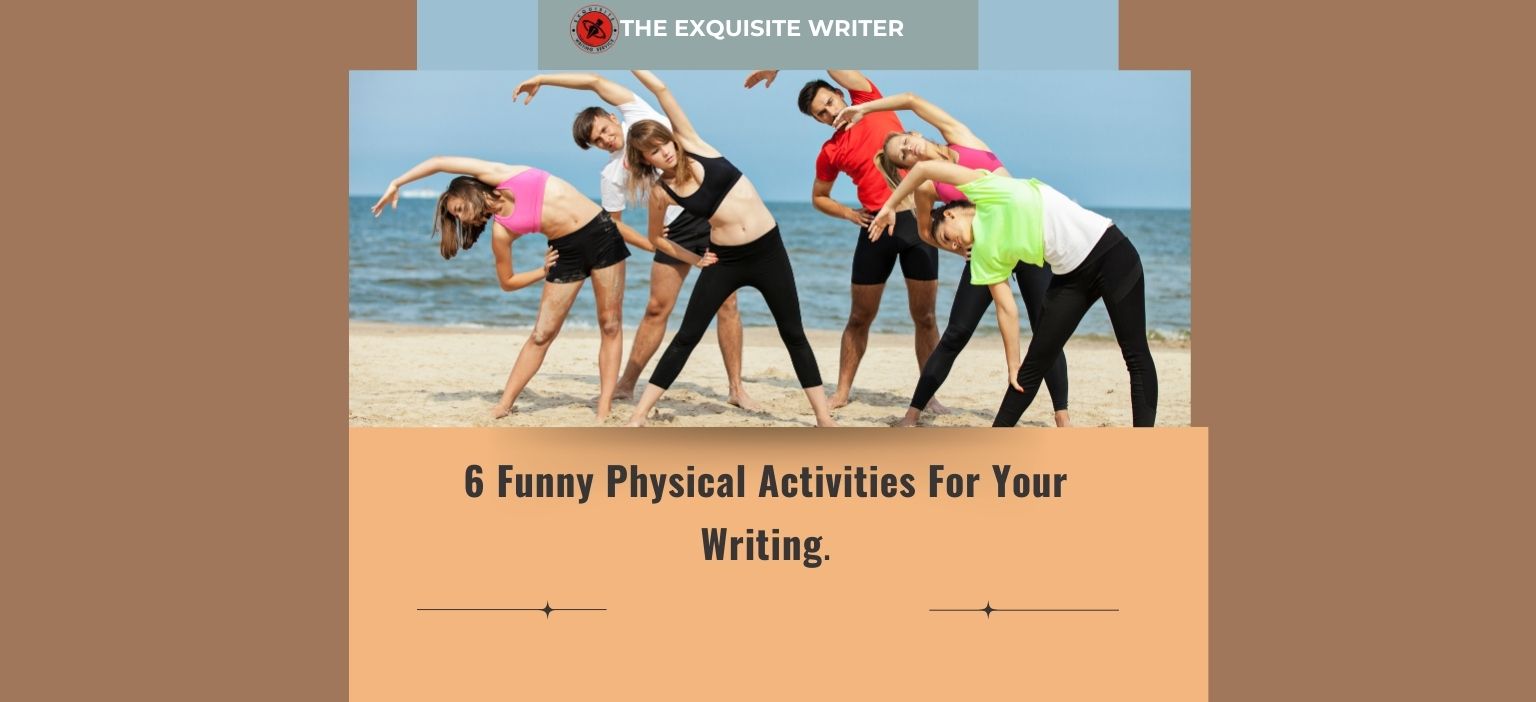The Exquisite Writers care so much about the welfare of writers, and rightly so! Writing is more than just a mental exercise.
You spend long hours sitting at a desk, focusing on words, paragraphs, and sentences, which engages all your body parts.
You need physical movements or physical activities to stimulate your mind, enhance creativity, and, most importantly, beat writer’s block!
In this article, our focus won’t be on walking and stretching but rather on some unusual physical activities that are great for you!
You might have heard of them—but trust me, it’s something even more special!
According to Harvard Health, physical activity directly boosts mood and cognitive performance; These are two key drivers of creativity and focus for writers.
At The Exquisite Writer, we believe that the body fuels the mind, making movement an essential part of a sustainable writing lifestyle.

6 Unconventional Physical Activities For Writers
Here are unusual physical exercises and physical activities to try:
1. Dancing
Dancing? Oh yes! Just write to the beat.
Dance is still one of the most liberating physical activities writers can engage in.
Hey, don’t get us wrong—this isn’t about moving your body to music;
Dancing awakens your brain’s creative and logical side, helping you think outside the box—just what a writer needs.
Thus, when you allow yourself to move freely, it becomes very easy to break out of a rigid mental state and ignite the fire for new ideas and inspiration.
But to convince you more, this is how dancing helps you:
- Stimulates creativity: The flow and rhythm of dance encourage fluidity in writing, allowing you to experiment with the structure and pacing of your stories.
- Releases tension: Moving reduces stress and anxiety, which are enemies of creative flow.
- Encourages expression: Dancing allows one to express emotions physically, which can translate into more emotional and vivid writing.
How to do it:
- Play only music that matches the mood of your writing scene and make your body move in response to it. You can play other music, perhaps, if you want to experiment. This can help you get a feel for the tone of your writing.
Now, each time you dance, think about your characters (especially for fiction writing) and how their emotions might be revealed through their body language. This will help you write more dynamic and expressive descriptions.
Trust me, this works wonders!
Research from the American Psychological Association shows that expressive movement such as dance helps improve creativity and emotional resilience.
2. Drumming
Don’t let this shock you; we are talking about unconventional physical activities.
But let’s talk about how drumming works.
Well, I guess it’s pretty lovely to agree that drumming will help you beat writer’s block.
Yeah, you can add it to this list of activities to help you beat writer’s block.
Drumming is one of the powerful physical activities that taps into your inner rhythm and can help you escape your thoughts.
It’s beneficial for writers looking to reignite their creativity and break free from repetitive thought patterns.
How it helps writing:
- Enhances focus and concentration: Drumming’s repetitive nature can sharpen one’s ability to stay focused and in the flow.
- Discharges pent-up energy: Drumming is an excellent outlet for emotional and physical tension, helping to clear mental blocks.
- Sparks creativity: The nature of drumming can help you think more freely and spontaneously when discussing plot twists and character development.
How to do It:
- A simple drum can do, but that’s not the only hack. You can tap out a rhythm on your desk and beat out different rhythms. I do that a lot. Explore the pacing and tempo of the rhythms, enabling you to mirror them in your writing. With that drumming pattern, you can inspire new character or scene dynamics ideas.
Science backs rhythm as a tool for creativity. A study published in Frontiers in Psychology found rhythmic activities enhance focus and flow.
3. Tai Chi
Depending on where you live, this might be new to you.
But I’m sure that for personality writers—it wouldn’t be new.
They would have written about meditation. But let’s pause on that.
Tai Chi—a Chinese martial art—is renowned for its deliberate and slow movements. It’s popularly described as meditation in motion.
This form of exercise enhances focus, balance, and mindfulness—essential qualities that are great for writers, even though they are often associated with athletes.
How it helps writing:
- Enhances mindfulness: Tai Chi encourages you to pay complete attention to your breath and body, which can help clear distractions and improve your ability to focus on writing.
- Encourages patience: The slow and gentle movements help develop patience, allowing you to address complex writing problems at your own pace.
- Stimulates energy flow: Tai Chi enhances the flow of chi (energy), a key element for boosting creative energy and mental clarity.
How to do it:
- Just before you start writing, take a few minutes to practice the slow, deliberate movements of Tai Chi. Focus on your connection and breathing between your mind and body.
Adopt the calm and focused energy of Tai Chi to approach your writing with a more centered mindset, which can help reduce stress and creative blocks.
The Mayo Clinic highlights Tai Chi’s benefits in reducing stress and increasing mindfulness — both critical for writers dealing with mental fatigue.
4. Juggling
While this might seem like a fun party trick, it is undoubtedly an excellent way to enhance focus, mental agility, and hand-eye coordination.
Juggling helps with multiple directions at once, making it an ideal activity for writers looking to enhance their ability to resolve complex storylines, varying plot threads, and multiple characters.
How it helps writing:
- Enhances multitasking: When you jug, you train your brain to manage several tasks simultaneously. It can be similar to managing numerous character arcs or writing multiple plotlines.
- Enhances focus: The need to focus while juggling helps enhance mental clarity and limit distractions—which can help address distractions, especially when writing in a noisy or busy environment.
- Enhances problem-solving: Juggling demands quick thinking and adjustment, allowing you to become more flexible in how you approach writing challenges.
How to do it:
- You can begin with simple juggling and then incorporate it into the writing practice you adopt. As you juggle, think about how you can balance your story’s elements—keeping multiple characters, ideas, and subplots in motion at the same time.
- Use the juggling metaphor to visualize your story arcs as if you were juggling balls, and see if it can help you organize and structure your narrative even more clearly.
5. Yoga
An alien to this? I doubt it!
Here’s the gist: Yoga allows you to stretch your imagination and your body.
No, yoga isn’t just about physical flexibility—it’s also about mental flexibility.
Yoga encourages focus, relaxation, and alignment—both physically and mentally allowing you to approach writing with creativity and renewed energy.
How it helps writing:
- Limits stress: Yoga effectively calms the nerves, which can help combat the anxiety that often comes with writing, especially when it involves projects with strict deadlines.
- Enhances creativity: Focusing on movement and breath helps clear mental clutter, allowing new ideas to flow freely.
- Improves focus and discipline: Yoga educates you to be present in the moment, which can translate to more focus and discipline in your writing process.
How to do it:
- Daily, if possible, practice a few gentle yoga poses before and after writing. This will help you loosen up and clear your mind. Pay attention to grounding poses that allow you to feel centered, like a Child’s Pose or Mountain Pose.
- Each time you stretch, focus and think about the balance between your writing, that’s how you can pull the tension in your story.
Experts at Johns Hopkins Medicine confirm yoga improves concentration and reduces anxiety, which can boost writing productivity.
6. Hula Hooping
Let me be honest with you: I learned about this during the research process.
I hope you’ll love it, so I’ve included it in this list.
Regarding “hula hooping,” users agree that it’s an enjoyable and often one of the overlooked physical activities that entails rhythm, core strength, and coordination.
The continuous movement helps create a flow state, which is a perfect mindset for creative work.
How it helps writing:
- Builds focus and rhythm: This activity’s consistent movement is essential for helping writers develop a rhythm for their writing, helping them sync the flow of words with the flow of their body.
- Clears any mental fog: Hula hooping forces your brain to be present at the moment, which can, interestingly, help a writer focus their thoughts and spark new ideas.
- Boosts your mood: Yeah, hula hooping is a playful activity. This can help an individual relax and have fun, allowing their creativity to flow freely.
How to do it:
- Hop for a few minutes to release tension and clear your mind before you begin writing. Focus on both the rhythm and motion, and let that guide the pacing of your writing.
- Just imagine your story character’s or arc’s development as a hoop, maintaining fluidity and balance throughout.
According to Cleveland Clinic, hula hooping enhances focus, core strength, and endurance, a fun way to get your creativity flowing.
Don’t miss: Fun Ways to Overcome Creative Burnout as a Writer.
Final Thoughts
The movement will help you improve your writing career. Thus, do not separate physical activities from your writing process.
In fact, it can be key for cultivating emotional expression, focus, and creativity.
When you integrate these unusual activities into your writing routine, you will boost your physical health, creative energy, and mental agility.
Be sure to incorporate one or several of these activities into your writing practice, and then watch what happens to your craft!
Remember, the best writers balance mental work with physical renewal. Movement doesn’t just sustain your health, it fuels imagination and productivity.
For more writer wellness guides, check out our other resources on The Exquisite Writer Blog, where we share insights from seasoned professionals and creative coaches.


I want to do this
Yes, definitely worth a try!